Fishing for Panfish
All about bluegill, sunfish and perch fishing
Last updated on
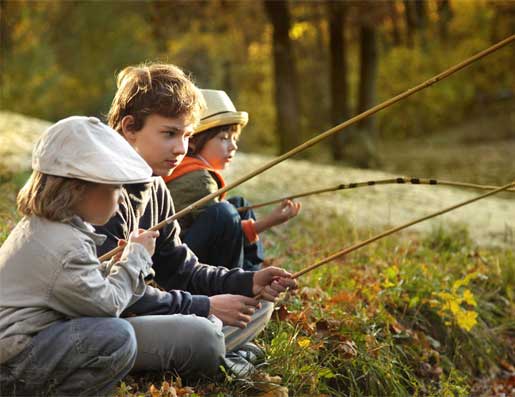
Pan Fish Fishing Options
What Are Panfish?
Sunfish and panfish are terms encompassing various freshwater species like bluegill, sunfish, and perch. Panfish are opportunistic feeders, consuming a diverse array of prey. Their diets commonly consist of aquatic insects, small crustaceans, and even smaller fish. However, different species of sunfish preferences may shift based on seasonal variations and local conditions. During warmer months, when insect activity is high, panfish tend to focus more on insects and larvae. As temperatures drop, they may switch to feeding on smaller fish, worms or crustaceans.
Common Sunfish Species
Panfish fishing basics video
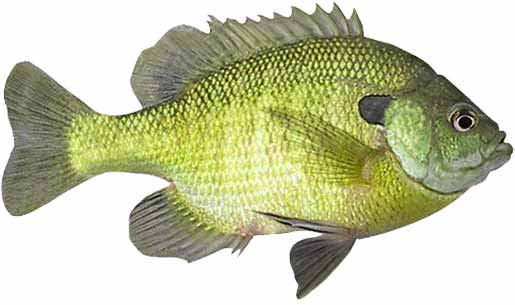
Bluegill
One of the easiest fish to catch, bluegill are eager to take most types of sunfish bait and lures. They are sight feeders and prefer slightly stained water with little or no current. Bluegill tend to run in schools and congregate near their food supply. These aggressive eaters can survive in most warm-water fisheries, preferring water temperatures ranging from 60° to 85°. Ideal hook sizes are #6 to #10.
Other names for bluegills include common yellow perch, sunfish, red-breasted bream, red-spotted sunfish, long-eared sunfish, white bass, as well as a host of variations and cross breeds. They can be found in depths of 35 feet or more and all the way up to the surface depending on time of day and weather conditions. Bluegill spend the majority of their active time in 1 to 10 foot depths.
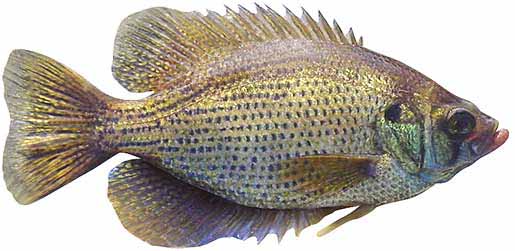
Flier Sunfish
Found primarily in the southern part of the USA, flier sunfish prefer rivers and weedy lakes with warmer water temperatures. This is a favorite for private ponds. Its diet can include insects and small invertebrates. Use standard sunfish bait, fished on a size 12 hook. Fliers can be taken on flies and are fun to catch on ultra light equipment.
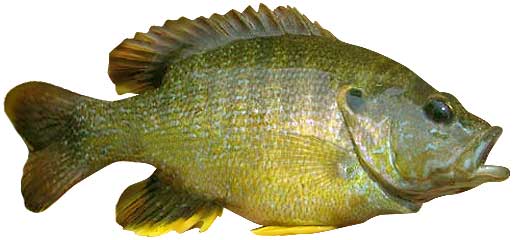
Green Sunfish
Another species that adds variety to panfish fishing is the green sunfish. While they may not be as numerous as bluegill, they are still sought after by many anglers. The green sunfish is native to lakes and ponds and prefers areas with heavy vegetation, or other cover.
Their diet consists of small invertebrates, insects and larvae. Use light line, size 12 hooks and worms, crickets or cut bait. They tend to run in schools so competition for food can make them easy prey for anglers. Green Sunfish are also known as a rock bass or goggle-eye.
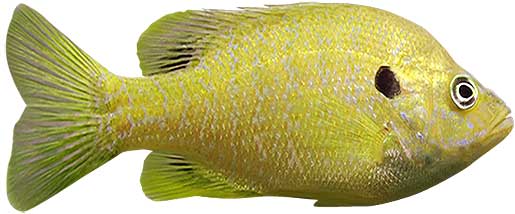
Hybrid Sunfish
A high percentage of the hybrid sunfish are male, which limits the reproductive process. They do quite well in private ponds and small lakes, and prefer areas with heavy vegetation and cover. They have very small mouths, so use size 10, to size 12 hooks. Fish for them on light tackle using worms, insects, prepared bait and cut bait.
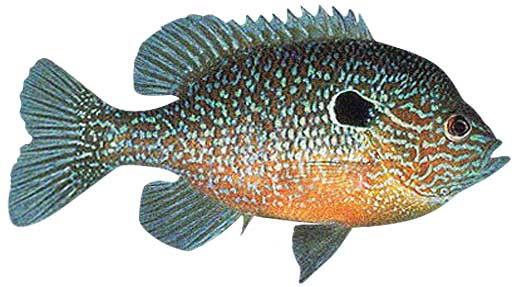
Longear Sunfish
Anglers love longear sunfish for several reasons. They feed on the surface making them vulnerable to fly fishing. They are also easy for kids to catch on worms or cut baits, plus they make great bait for larger, predator fish. Use standard sunfish bait, fished on a size 8 to size 12 hook. Use ultra light tackle, they'll eat just about anything edible.
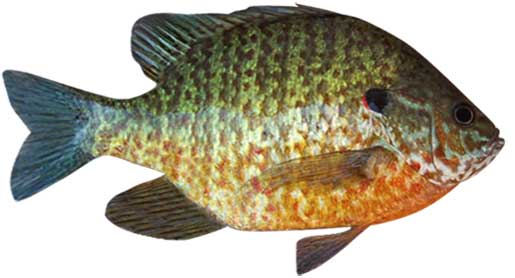
Pumpkinseed Sunfish
Shaped much like a pumpkin seed, it often has body coloring similar to a pumpkin color. The favorite habitat of the pumpkinseed sunfish is weed-covered lake bottoms in preferably clear water. They thrive in warmer water temperatures ranging from mid seventies to low eighties. Fish for them on light tackle with small hooks using worms, insects, prepared bait and cut bait, fished on a size 8 to size 12 hook.

Redbreast Sunfish
The males are quite colorful with red, orange or yellow breasts, and dark green upper bodies. Females are colored the same but in drab shades of the same colors. Redbreast sunfish are also commonly called longear bream, redbreasted bream and yellowbreast bream., Worms, larvae, crickets, insects, cut bait and prepared bait all work well on a size 10 to size 12 hook.
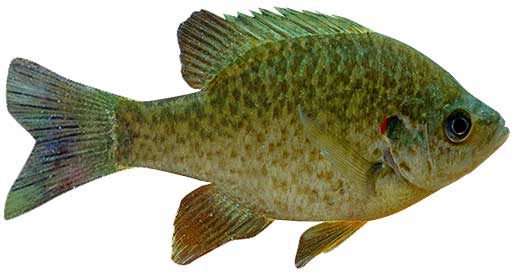
Redear Sunfish
Also known as shellcrackers, redear sunfish are less common but can be found in certain waters throughout the country. They are slightly larger than bluegill and are recognized for their distinctive red ear flap. The red stripe along the edge of the ears is the distinguishing mark for males, and is orange on females. It is typically yellowish on the sides, white on the belly and dark green or brown on the top side. The redear sunfish can be found throughout the warmer states. Use standard sunfish bait, fished on a size 8 to size 10 hook. Rarely does the redear sunfish rise to take flies and baits off the surface.
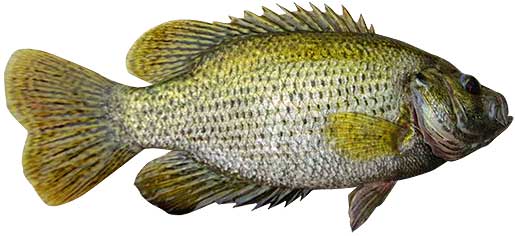
Rock Bass
Native to the eastern half of the USA, rock bass are good eating, and fun to catch on light tackle or a fly rod. You can find rock bass in streams and rivers where they prefer clear water with rocky bottom and vegetation. The rock bass, aka goggle-eye, green sunfish and sometimes branch perch, prefers water temperatures from 64 to 72 degrees., They feed primarily on smaller fish, insects, and crustaceans. Worms, grubs and cut bait work well, fished on a size 8 to size 12 hook.
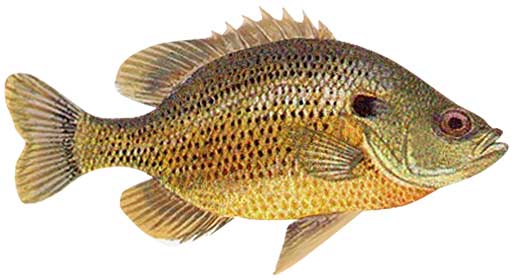
Spotted Sunfish
Green on the top and often reddish to brown on the lower sides, they have a dark or black ear covering which looks like a black spot. Spotted sunfish naturally inhabits streams, creeks and rivers. They prefer areas with gravel or sand, and plenty of vegetation. Their favorite foods include invertebrates, insects and small fishes but will feed on virtually anything edible including plants. They will also rise to feed on the surface. The spotted sunfish are small, but quite good eating. Fish for them with ultra-light tackle using virtually anything edible as bait on a size 10 to size 12 hook.
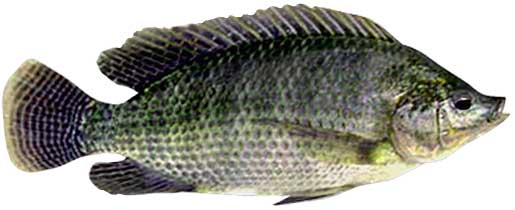
Tilapia
Most tilapia are omnivorous with a preference for eating soft aquatic vegetation. They are typically found in warmer waters in the southern states, both east and west. Tilapia have difficulty surviving water temperatures below 50 degrees. They are of similar size and shape to crappie. Fish for them like you might for bluegills using worms, crickets and dough balls on a size 12 hook.
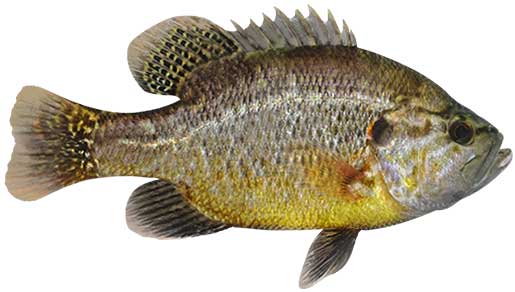
Warmouth
Warmouth sunfish have a larger mouth than most sunfish and can eat larger prey. Adult warmouth feed on insects, mollusks, minnows and small fish. They prefer sandy bottoms of quiet areas in creeks, streams and rivers. They look for heavy vegetation to use as cover. Use standard sunfish bait, fished on a size 6 to size 10 hook.
It is rather golden in color overall, darker greenish on the top side and lighter on the underside, with mottled spotting similar to a crappie. They are fun to catch on ultra light tackle and put up quite a fight, when you hook a fat, two ponder.
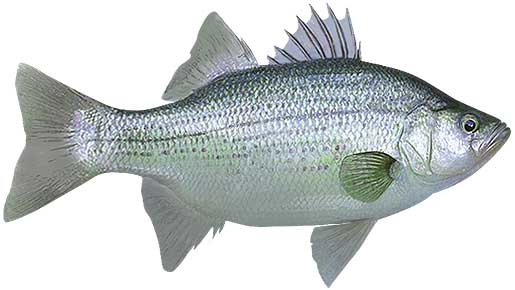
White Bass
Often called sand bass, stripes, barfish and silver bass, white bass have silver sides with horizontal dark stripes. They are a good fighter, fun to catch and tend to run in schools - often schools of several hundred or more. Their primary diet is bait fish and other smaller fish but they also eat worms and insects.
Fish for the white bass on light tackle with jigs, spoons, minnow-imitation lures and live bait including worms and minnows. White bass often school deep, particularly in summer and winter - moving shallower in spring and fall.
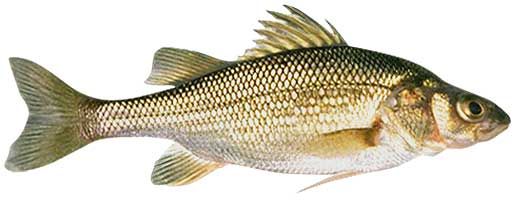
White Perch
The white perch is named for its color, which is generally white or silver with shades of adaptive color from its environment to help it hide from predators. They are quite prolific and can be considered a nuisance in some waters. For bait, use worms, minnows, jigs, spoons and very small lures imitating baitfish.
They are a good tasting fish and are even fished commercially. White perch make a great fish fry with nice filets coming from ones approaching a pound. Use light tackle to to add excitement when fishing for white perch.
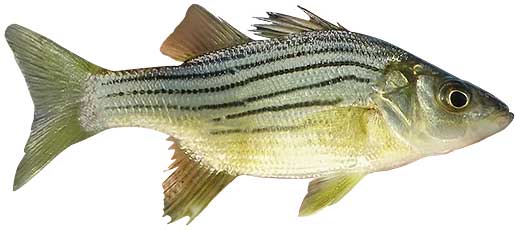
Yellow Bass
Yellow bass are generally silver or golden on the sides with yellow bellies and dark horizontal stripes. They average about half a pound and tend to run in schools. Use spoons, spinners, or live minnows and experiment with depth until you find their comfort zone for the day. Light tackle is ideal.
They are found in most states from the Mississippi River east and a few western states. The yellow bass prefer warmer water temperatures yet remain active in both warmer, and sometimes colder water.
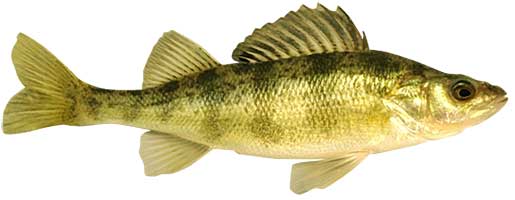
Yellow Perch
Yellow perch are found in ponds, lakes, and slow-moving rivers, ideally in clear water near vegetation. They are often misnamed as perch, rock perch and many other names. Their primary diet consists of minnows and other small fish, insects and worms. Yellow perch prefer water temperatures from 66 to 70 degrees but remain active in temperatures outside this range.
These perch are generally yellow, to gold, to brown in color and most often lighter shades of these colors. Dark vertical bands decorate their sides. They average about a third of a pound and 6 inches long, although many larger ones are caught as well. Their primary diet consists of minnows and other small fish, insects and worms. They are fun to catch on ultra light tackle and can be caught year round. They are a favorite of many ice fishing anglers. Use worms, minnows, small jigs. spinners or cut bait.
Fishing For Panfish
Sunish are eager feeders, making them an excellent target for youth fishing outings. The most popular method is using ultralight tackle, such as light rods and small reels, paired with tiny hooks and light line - ideally 2-6-pound.
 Annually, panfish exhibit predictable movement patterns influenced mostly by water temperature and spawning instincts. As temperatures rise in spring, panfish migrate from deeper waters towards shallow areas, where they spawn. This migration provides anglers with prime opportunities to catch panfish, as they tend to congregate in large numbers. At this time, they will be found in shallow bays, spawning beds, or near submerged vegetation. In summer and winter they drop into deeper water.
Annually, panfish exhibit predictable movement patterns influenced mostly by water temperature and spawning instincts. As temperatures rise in spring, panfish migrate from deeper waters towards shallow areas, where they spawn. This migration provides anglers with prime opportunities to catch panfish, as they tend to congregate in large numbers. At this time, they will be found in shallow bays, spawning beds, or near submerged vegetation. In summer and winter they drop into deeper water.
Fly fishing for panfish makes for an excellent outing. Some panfish will rise to take a dry fly or attack most flies presented to them at varying depths. This presents a great opportunity to teach fishing skills to a beginner, and fly fishing techniques at the same time.
Pan Fish Baits And Lures
Baits like live worms, insect larvae, and small minnows are commonly used to entice bites. Tiny jigs, spinners, soft plastics, and prepared baits are also effective. Miniature size is important to mimic the delicate feeding habits of freshwater panfish. A small bobber or float can be attached to the line to suspend the bait at a desired depth. Experiment with depth, colors and lure sizes to match the preferences of the targeted species.
Top Producing Panfish Lures & Bait
Check out the top producing lures and bait for bluegill, redear sunfish, rock bass and warmouth, as well as the best lures for white bass, yellow bass, white perch and yellow perch.
Types Of Panfish
Mostly from the sunfish family, panfish that we cover in this website include bluegill, eight species of sunfish, rock bass, white and yellow bass, and white and yellow perch. Panfish are prolific spawners and repopulate the waters as fast as they are harvested.
Sunfish Size
Bluegill, perch and sunfish generally range from less than half a pound, to over 4 or 5 pounds at world-record size. The world record for tilapia is over 9 pounds.
Take Kids Fishing For Panfish
Panfish fishing is a great way to introduce kids to the joys of fishing. The small size of these fish makes them perfect for small anglers. Their willingness to bite ensures a positive experience for young anglers. Taking kids fishing is a great investment in their future. With numerous youth fishing events and family-friendly locations across the country, panfish fishing is a fantastic way to create lasting memories and foster a love for the outdoors in the next generation of anglers.
Panfish World Records For Sunfish
Bluegill
Lepomis macrochirus
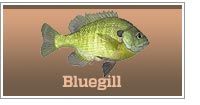
Prefers slightly stained to murky water with little or no current. Survives in most warm fisheries. Ideal water temperature: 60° to 85°
World record: 4 pounds, 12 ounces
Flier Sunfish
Centrarchus macropterus
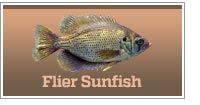
Fliers are also commonly called pond flier, millpond flier and round sunfish. Ideal water temperature: 72° to 85°
World record: 1 pound, 5.5 ounces
Green Sunfish
Lepomis cyanellus
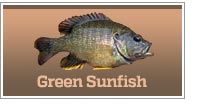
The green sunfish is favorite for private and farm ponds. Ideal water temperature: 70° to 80°
World record: 2 pounds, 2 ounces
Hybrid Sunfish
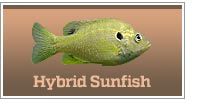
A cross between bluegills and other sunfish including green, redear, redbreast and other sunfish. Ideal water temperature: 70° to 78°
World record: 1 pounds, 12 ounces
Longear Sunfish
Lepomis megalotis
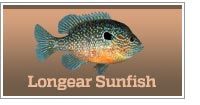
The longear sunfish is sometimes called red-belly bream, red perch, blackear and red bream. Ideal water temperature: 75° to 80°
World record: 1 pounds, 12 ounces
Pumpkinseed Sunfish
Lepomis gibbosus
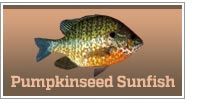
Pumpkinseeds are also known as punky or common sunfish. Ideal water temperature: 75° to 82°
World record: 1.4 pounds
Redbreast Sunfish
Lepomis auritus
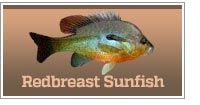
Known for the colorful red, orange or yellow breasts of the males, they are easy to catch on light tackle. Ideal water temperature: 76° to 84°
World record: 1.7 pounds
Redear Sunfish
Lepomis microlophus
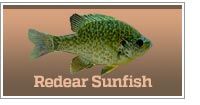
The redear is also known as stumpknocker and shellcracker and grows larger than most sunfish. Ideal water temperature: 70° to 80°
World record: 6.3 pounds
Rock Bass
Ambloplites rupestris
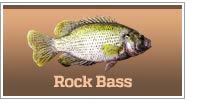
Rock bass make their home in clear water, preferring rocky bottoms with vegetation. Ideal water temperature: 64° to 72°
World record: 3 pounds 0 ounces
Spotted Sunfish
Lepomis punctatus
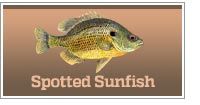
Naturally inhabits streams, creeks and rivers - eating invertebrates, insects, small fish and plants. Ideal water temperature: 70° to 89°
World record: 2 pounds 2 ounces
Tilapia
Oreochromis aurea
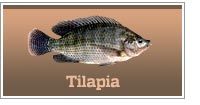
Tilapia are an excellent tasting fish that are found in warm-water canals and waterways. Ideal water temperature: 70° and above.
World record: 9 pounds, 10 ounces
Warmouth
Lepomis gulosus
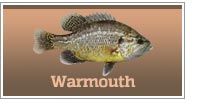
Also known as goggle-eye, stumpknocker, mudgapper and warmouth bass. Ideal water temperature: 78° to 86°
World record: 2 pounds, 7 ounces
White Bass
Morone chrysops
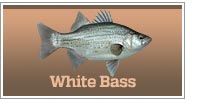
White bass tend to run in schools and are good fighters. Ideal water temperature: 63° to 76°
World record: 6.8 pounds
White Perch
Morone americana
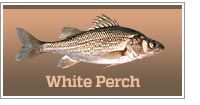
Also known as perch, silver perch, black-back and grey perch. Ideal water temperature: 62° to 70°
World record: 3.5 pounds
Yellow Bass
Morone mississippiensis
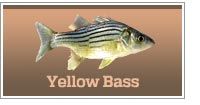
Yellow bass tend to run in schools and are often referred to as stripers or stripies. Ideal water temperature: 55° to 67°
World record: 3.75 pounds
Yellow Perch
Perca flavescens
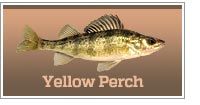
Possibly the best tasting of all the panfish, yellow perch are a favorite for fish frys. Ideal water temperature: 66° to 76°
World record: 4.2 pounds
For details on crappie visit our crappie fishing section.
Related Articles
- Fishing For Bluegill
- Fishing For Flier Sunfish
- Fishing For Green Sunfish
- Fishing For Hybrid Sunfish
- Fishing For Longear Sunfish
- Fishing For Pumpkinseed
- Fishing For Redbreast
- Fishing For Redear
- Fishing For Rock Bass
- Fishing For Spotted Sunfish
- Fishing For Tilapia
- Fishing For Warmouth
- Fishing For White Bass
- Fishing For White Perch
- Fishing For Yellow Bass
- Fishing For Yellow Perch
Locate panfish fishing opportunities by state
081225
Fishing Information


